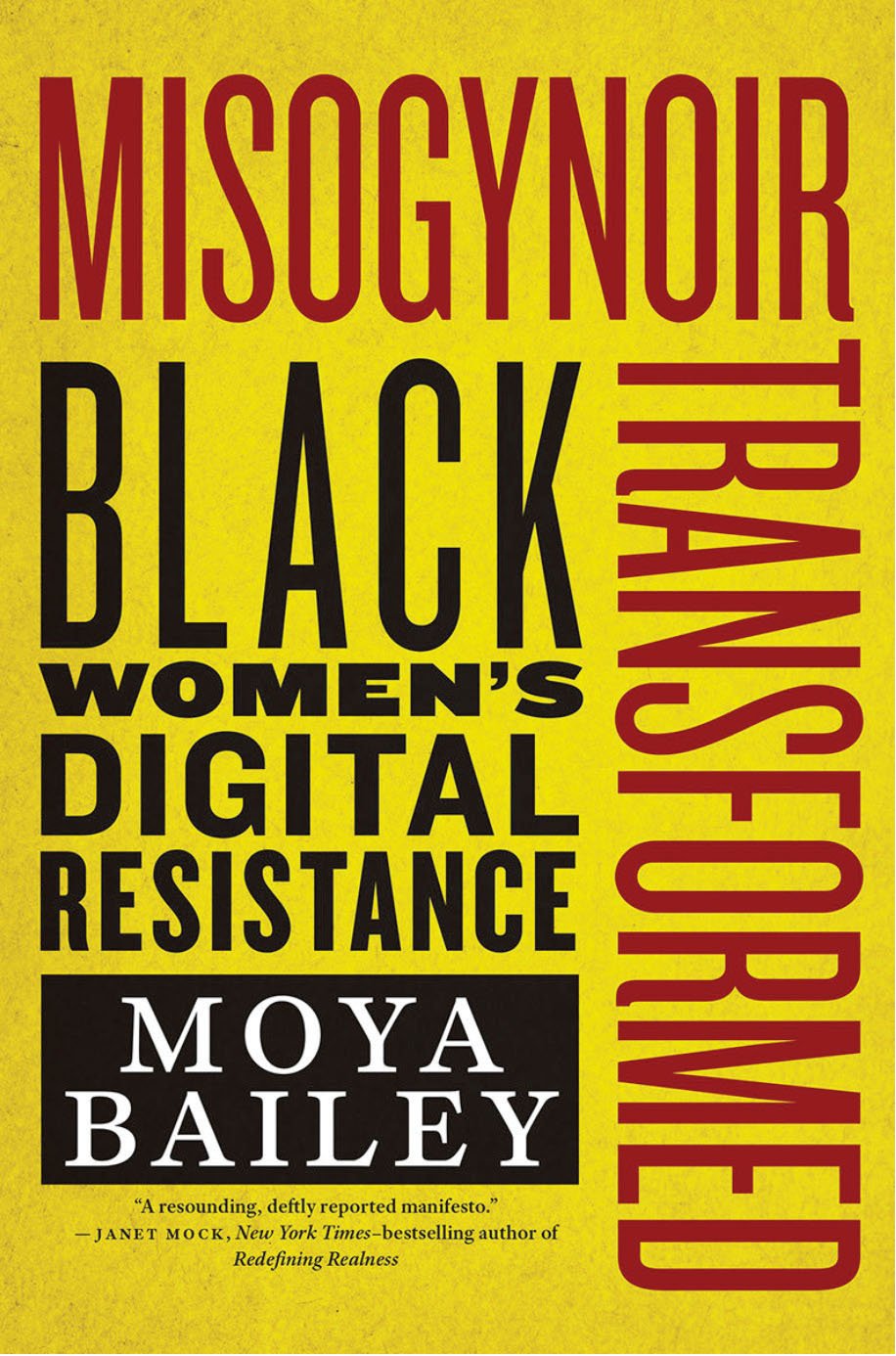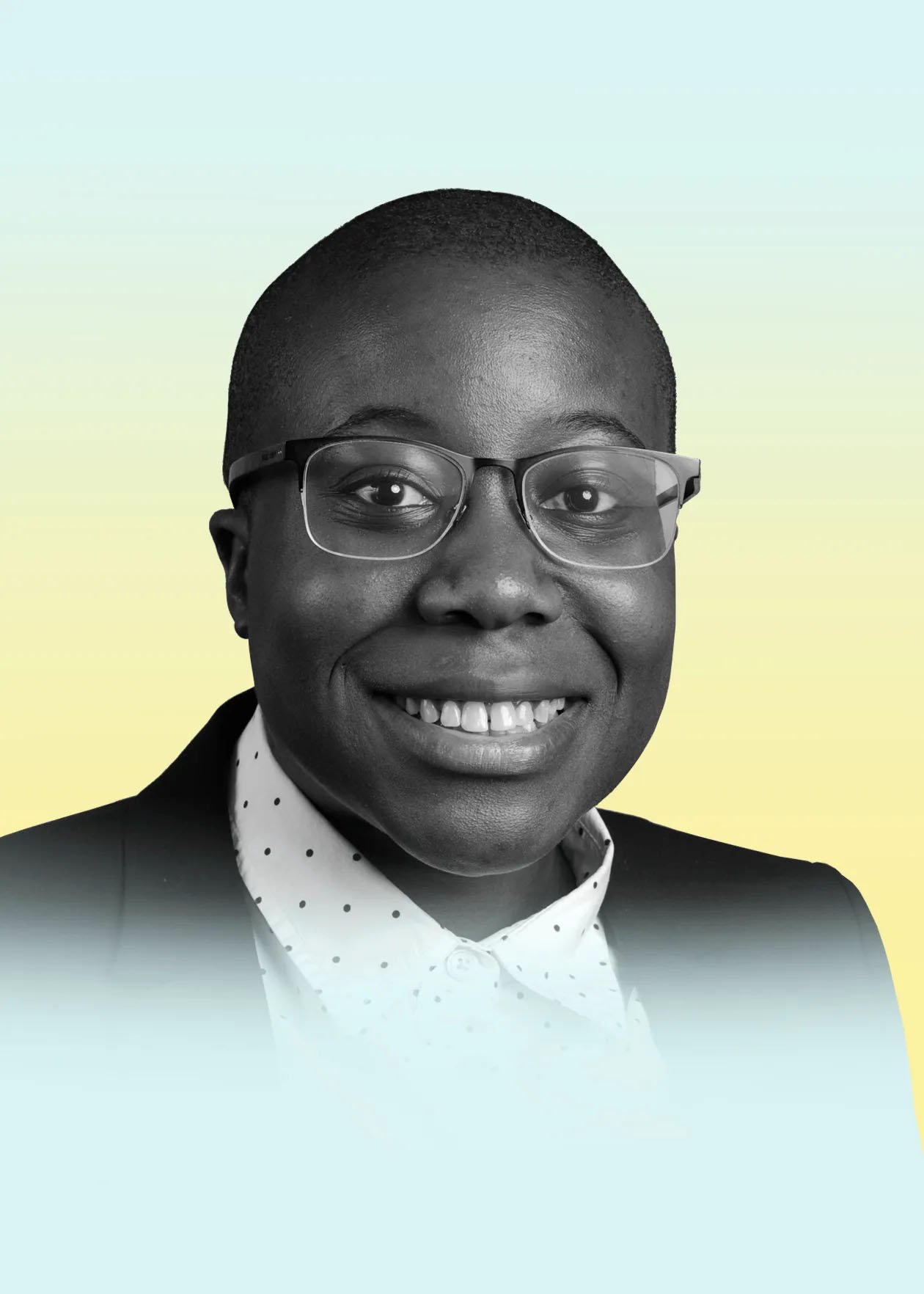
When Moya Bailey—now an associate professor of communication studies at Northwestern University—first coined the term misogynoir in 2008, she was a grad student investigating how representations of Black women in popular culture influence their treatment in society and medicine. “It was in writing my dissertation that I landed on the word ‘misogynoir’ to describe the particular kind of venom directed at Black women through negative representations in the media,” she writes in her book Misogynoir Transformed. Bailey defines the term this way:
Misogynoir, (pronounced mi-soj-uhn-nwar) describes the anti-Black misogyny that Black women experience, particularly in U.S. visual and digital culture. Misogynoir is not simply the racism that Black women encounter, nor is it the misogyny Black women negotiate. Misogynoir describes the uniquely co-constitutive racialized and sexist violence that befalls Black women as a result of their simultaneous and interlocking oppression at the intersection of racial and gender marginalization.
At the time of its coinage, Bailey did not anticipate the viral impact that this term would generate. Misogynoir has now appeared in The New York Times, Ebony, Essence, and the Washington Post, and its Wikipedia entry receives thousands of views a day. “The adoption of the term and its wide reach in digital spaces,” Bailey writes, “make further theorization of its use important for gender, critical race, and cultural studies audiences outside academics.” For countless Black people, a word had finally arrived in the cultural lexicon to help name the thing causing deadly harm.
Centuries of violence, exploitation, and erasure account for the chasm between the voices of Black women and the listening ears of the surrounding world. Black mothers, sisters, and activists have long fought for the equality of all, shouldering the bodies of Black brothers and sons lynched by the hand of white supremacy and marching alongside white women as they spoke out against patriarchal abuse and control. However, when they fight to address their own oppression, they often do so alone.
While we have grown to know by heart the many names of unarmed Black men and boys murdered by police—Tamir Rice, George Floyd, Daunte Wright, Eric Garner, Michael Brown—police violence against Black women largely failed to capture national attention until 2020, when the name of Breonna Taylor, who was slain by police in her own home, became a rallying cry of the Black Lives Matter protests. Before this, we heard
the cries of Sandra Bland’s family as they asked why their daughter was found hanging in her jail cell after being pulled over for a traffic stop. But before that: silence. The names of the forty-eight Black women murdered by police between 2015 and 2020—the majority killed in their own homes—never broke the surface of public interest. To be killed at the hands of racist cops is one thing, but for that murder to go totally unrecognized is a symptom of something much bigger. Bailey writes, “There remains a belief that recognizing the misogynoir experienced by Black women detracts from the efforts to support Black men and boys . . . . I argue that the silence and erasure of the violence Black women and girls endure is connected to society’s inability to see them as worthwhile subjects deserving of respect and care.”
Since the inception of slavery, perceptions of Blackness have been dictated by white supremacist fallacies. In order to uphold the industry of enslavement, antebellum popular media such as cartoons and minstrel shows depicted Black people as savage and inferior. These representations evolved into the dark, homogenous caricatures that persist in popular culture: “mammies” from Aunt Jemima to the digital memes of Hattie McDaniel from Gone With the Wind; angry “sapphires” from the 1950s Amos ’n’ Andy radio show to Louise from Sex and the City to caricatured portrayals of Michelle Obama. These asinine stereotypes not only reduce Black women to figures undeserving of tenderness, care, or respect but they also lead to real-world injury. Bailey explains that “perceptions of Black women as animalistic, strong, and insatiable have had material consequences on their lives and bodies . . . . Enslaved Black women were simultaneously gendered and ungendered through the objectification of their anatomy, whether in the service of white women’s health or being rendered genderless laborers and property.”
The plight of being disastrously seen and unseen by society has had devastating effects on the quality of life available for Black women, who, to this day, face limited access to health care, harsher punishments in schools, and murder. Bailey traces misogynoir’s effects on US policy over centuries. “During the 1940s, Black women who were in the hospital for any reason could be given hysterectomies without their consent or knowledge. This practice was so widespread in Mississippi it was dubbed a ‘Mississippi appendectomy.’” In the 1970s and 1980s, depictions of Black women as “welfare queens” were used to justify federal decisions to cut social services for millions of Americans. Most recently, as the world struggled with the Covid-19 pandemic, disparities in health care became evident as Black people, while not more likely to contract the virus, were found to be three times more likely to die from it.

Understanding this system of oppression is necessarily ugly and uncomfortable, but Bailey pushes the concept of misogynoir through a metamorphosis, instilling an extraordinary sense of hope. She sets the stage for this transformation by centering those who have been attempting to ameliorate it for centuries. “Whether through the activism of Black book clubs during the late 19th century through the 1920s, or the Black women’s media resistance of the 1980s and 1990s, Black women were creating the versions of themselves that they wished to see.” Black artists such as Alice Walker, Toni Morrison, Shonda Rhimes, and Issa Rae have presented society with a range of multidimensional Black women within different contexts. Bailey states, “Black women must continue to look to themselves for representations that affirm and expand who they are as human beings.”
While all people who present as Black women experience misogynoir, the term Black woman is not inclusive of nonbinary, agender, and gender-variant Black folks whose experiences of misogynoir are intimately connected with their misgendering. Moreover, not all people who identify as Black women are feminists, but as Bailey describes, “Misogynoir is deployed because of social beliefs about Black women, and those of us who read as Black women—despite our self-identification—get caught in the crosshairs . . . . Black nonbinary, agender, and gender variant folks are often invisible in data collection processes, making their realities marginal within the already liminal space of Black women’s digital alchemy.”
Bailey reminds us that in order to truly transform misogyny and misogynoir for all, it is crucial to center the people who are being most erased by it: Black trans women. “According to the LGBTQ advocacy group Human Rights Campaign, 91 percent of all trans women murdered in 2019 were Black women. Cis Black women have the highest murder rate among women in the United States, at a rate of 4.4 murders for every 100,000 Black women. The statistic for trans Black women is even more sobering, with 1 murder for every 2,600 Black trans women.” The life expectancy for Black trans women in the US is just thirty to thirty-five years. Bailey shows clearly that the plight of Black trans women in the US constitutes a human rights emergency and, throughout the book, works to create a fiercely inclusive space, where all Black people who identify and present as Black women can be seen and transformed. “Nearly all of the data collected for this book assume that the category, ‘Black women’ is capacious enough to address misogynoir, but . . . Black nonbinary and gender-variant people are also on the frontlines of the Black feminist transformation of misogynoir . . . . As we continue to grow our understanding of gender beyond a binary, and our digital age helps new language travel, more and more Black people are articulating themselves beyond the bounds of ‘woman.’”
Although society remains divided about the utility of social media, digital platforms have given Black women the ability to create community, solidarity, and activism. Through capturing violence experienced by Black women on camera and uplifting the names of those who are murdered through hashtags such as #SayHerName, a defensive advocacy strategy is enacted. This method of harm reduction deploys visibility as an actionable defense for capturing incidences of violence so that the public can be made aware of them. Black women can no longer remain out of sight and out of mind. Furthermore, digital spaces build networks of support through YouTube videos, forums, and web shows that promote the accurate representation required to fight back against misogynoir. Bailey uplifts examples of this by giving us glimpses into queer-affirming Black web series such as Skye’s The Limit (2013–), Between Women (2011–), and 195 Lewis (2017–), which celebrate Black life and articulate issues that may not be talked about openly in the community. Together with Black forums on Tumblr, this work challenges misogynoir by creating spaces for authentic Black voices, beauty, and joy. In doing so, activists are able to break through false draconian notions of what it means to be Black and what it means to be a woman, centering realness of Black women and Black nonbinary, agender, and gender-variant folks.
Bailey concludes her book by reminding us, “The process of transforming ourselves and the misogynoir we experience and/or perpetuate is a messy one that requires relationships built on trust and shared values . . . . Misogynoir causes harm, but Black women and Black nonbinary, agender, and gender-variant folks are using digital alchemy to transform that harm and reduce its negative impact. . . . A new world is not only possible but essential if misogynoir is to be truly transformed.”
In this work, Bailey stands among the great transformational justice titans of our time. While we may never completely eradicate misogynoir from society, we do stand a chance at transforming it. Calling each and every one of us in, Bailey instructs us to dust off our hands and do the work needed to witness this transformation in our lifetimes. As June Jordan wrote, “We are the ones we have been waiting for.”

